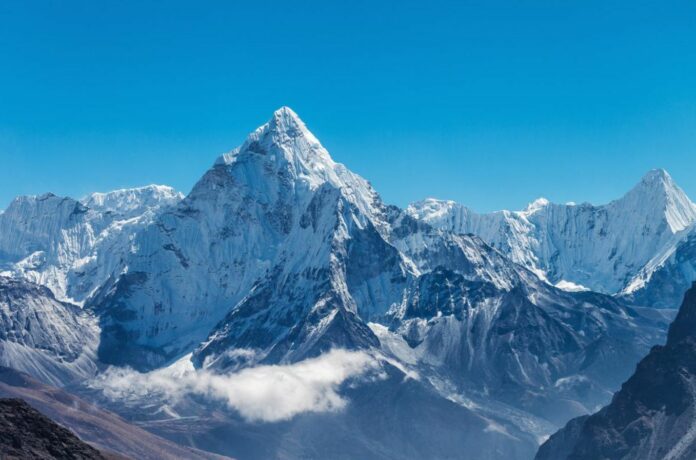The Himalayas Reimagined: This new study disproves what “experts have long thought that it takes a massive tectonic collision, on the order of continent-to-continent scale, to produce the sort of uplift required to produce Himalaya-scale elevations,” and “sends the field in some interesting new directions.”
Before They Touched the Sky: New Research Uncovers the Early Heights of the Himalayas
New Insights Suggest Himalayas Were Already Elevated Before Taking Their Majestic Form
The influence of mountain ranges on the world’s climate cannot be overstated. They serve as nature’s architects, modifying weather and determining the species that call their terrain home. When air ascends these mountains, it loses its warmth, leading to rain and snowfall. But the other side, known as the leeward side, often remains dry, giving birth to deserts in a process known as the rain shadow effect. The formation of these ranges has long intrigued climatologists.
A groundbreaking research article recently published in Nature Geoscience will surely ignite further discussions in this realm. A dedicated group of scholars from the Stanford Doerr School of Sustainability has repurposed a method initially designed for meteorite research to gauge historic elevations in sedimentary rocks. Their findings present a new perspective on the origins of the iconic Himalayas.
Page Chamberlain, a renowned professor at the Doerr School of Sustainability and the study’s principal contributor, elucidates, “The controversy rests mainly in what existed before the Himalayas were there.”
These findings reveal “for the first time that the edges of the two tectonic plates were already quite high prior to the collision that created the Himalayas – about 3.5 kilometers on average.”
This means these plate edges were already around 60% as tall as the current Himalayas, according to Daniel Ibarra, a vital team member and currently an assistant professor at Brown University.
“That’s a lot higher than many thought and this new understanding could reshape theories about past climate and biodiversity.”
This revelation implies that we might need to reassess and adjust some ancient climate models, especially those concerning the Himalayan region in Southern Tibet, also termed the Gangdese Arc. Moreover, it might prompt further exploration of other crucial mountain ranges, including the Andes and Sierra Nevada.
A Fresh Perspective Using a Time-Honored Method
The debate’s resurgence ties back to the intricacies involved in determining historical topographic heights, a discipline termed paleoaltimetry.
Determining such elevations is a formidable task, as acknowledged by scientists. While there are limited ways to estimate past altitudes from geological data, the team from Stanford, working alongside scholars from China University of Geosciences in Beijing, discovered a promising method.
Rain doesn’t just vary in intensity over different terrains; its chemical profile alters as it ascends mountainous regions. As it happens, heavier isotopes in the rain settle earlier, while the lighter ones reach higher altitudes. By delving into the isotopic signatures within rock formations, specialists can decipher the elevation at which these rocks were formed.
Among the oxygen isotopes present in sedimentary formations, we find oxygen 16, 17, and 18. Intriguingly, oxygen 17, which holds significant importance in this study, is exceptionally scarce, making up a mere 0.04% of Earth’s oxygen.
Among the various oxygen isotopes found in these rocks, oxygen 17, albeit rare, serves as a critical clue.
“There are maybe eight labs in the world that can do this analysis,” Chamberlain says. “Still, it took us three years to get numbers that made some sense and that were working every day.”
Shifting Grounds in Geological Understanding
For years, scientists believed that colossal tectonic collisions, like those between continents, were essential to create towering structures like the Himalayas. But the research by Chamberlain’s team challenges this notion.
Using samples from Tibet’s lower altitudes and analyzing them, the team inferred that the foundational parts of the Gangdese Arc had significantly higher elevations than previously believed, even before the massive tectonic upheaval.
Ibarra comments, “Experts have long thought that it takes a massive tectonic collision, on the order of continent-to-continent scale, to produce the sort of uplift required to produce Himalaya-scale elevations.
“This study disproves that and sends the field in some interesting new directions.”
Image Credit: Shutterstock
